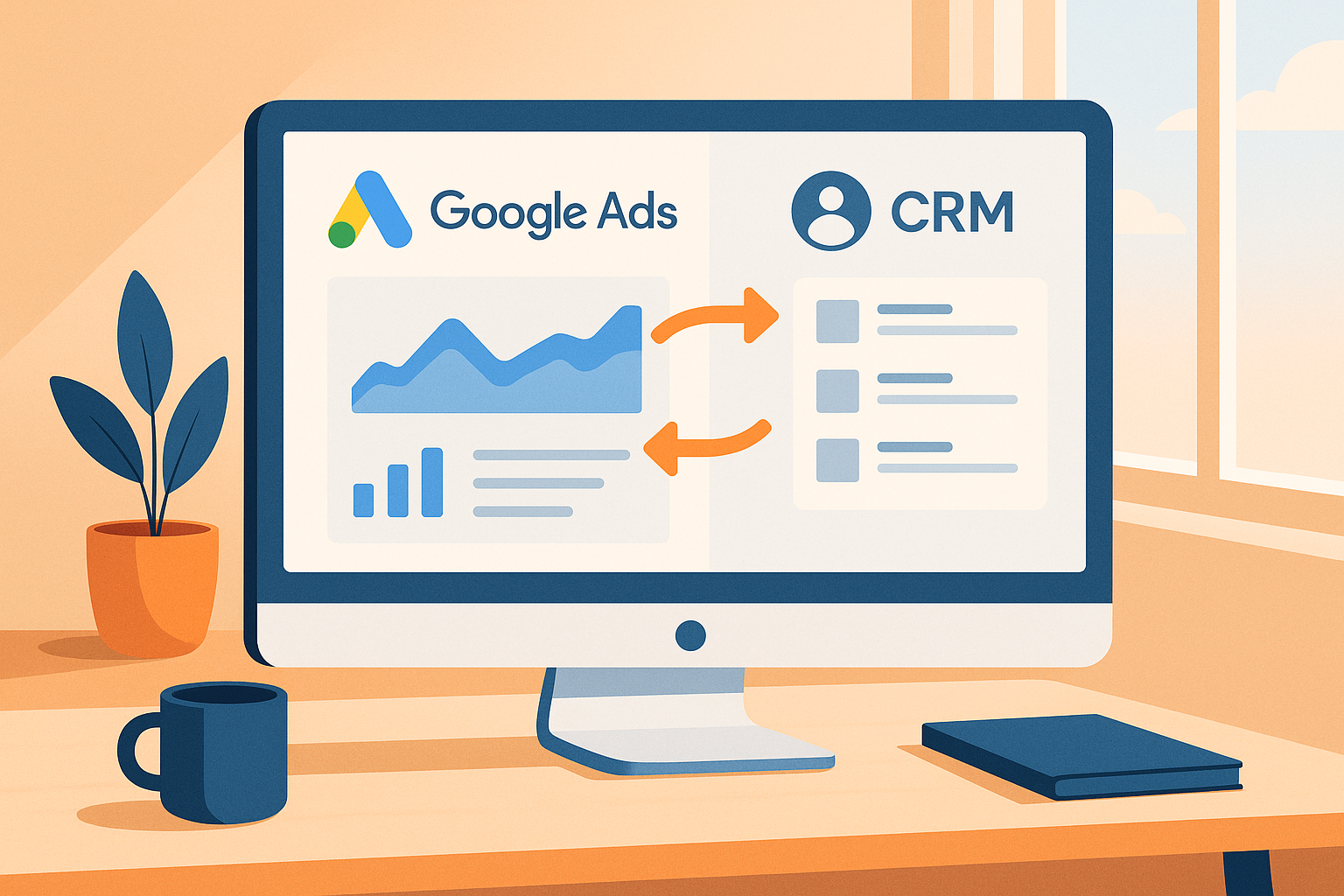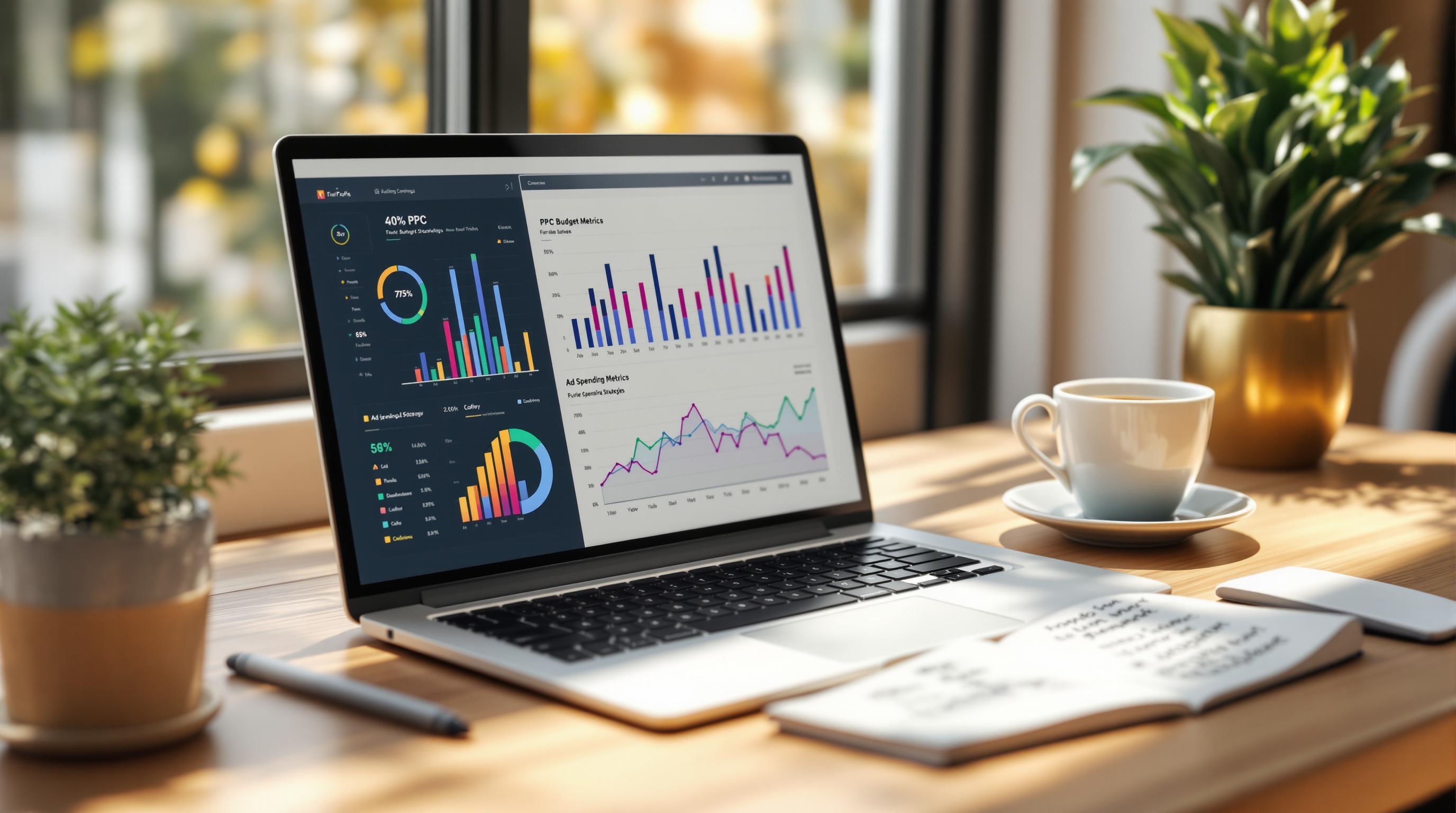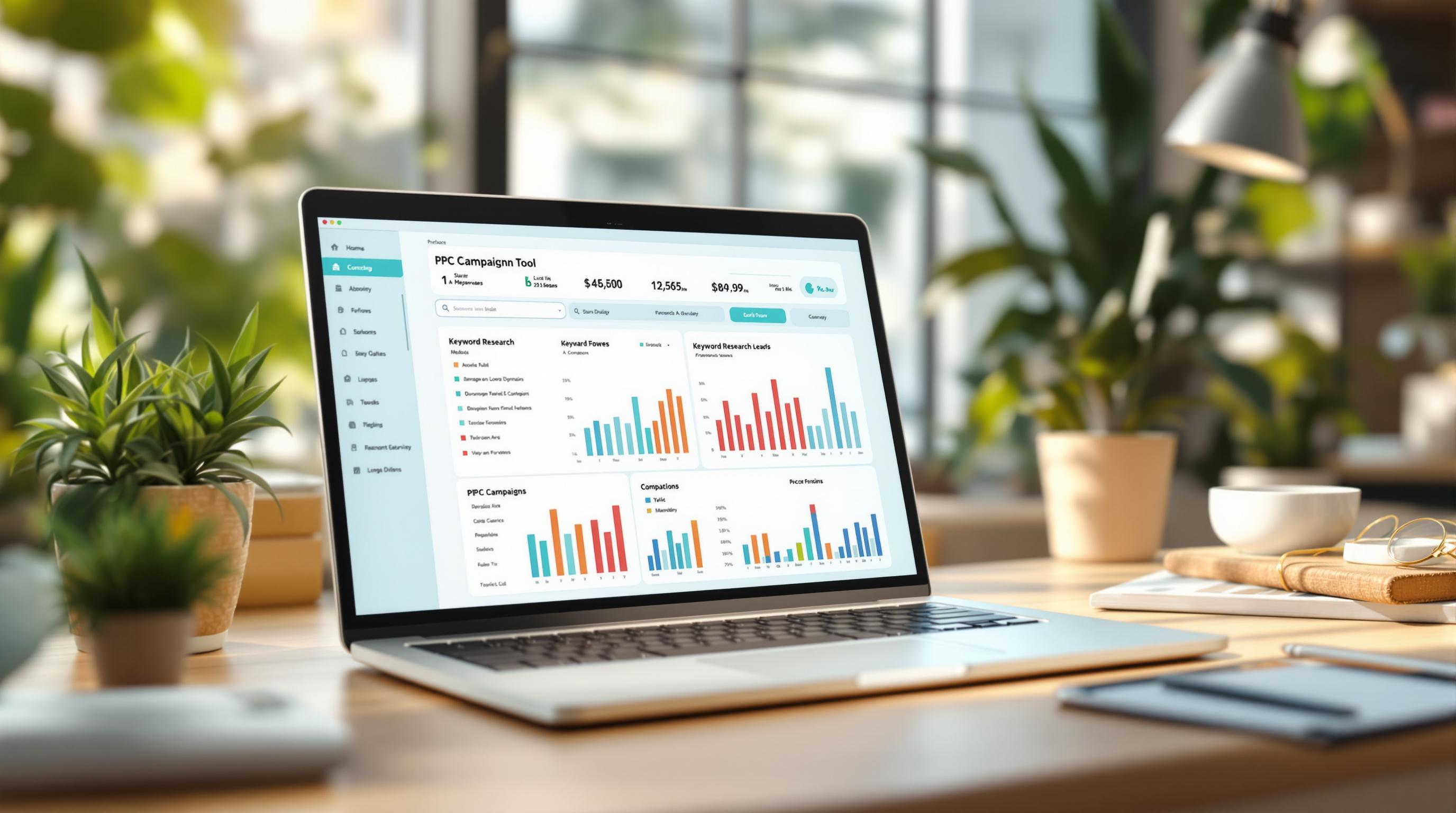Want better ROI on your ads? Seasonal PPC budget adjustments are the key. Here's what you need to know:
- Why Adjust Budgets? Consumer behavior changes with seasons - holidays, sales events, and trends impact demand. Without adjustments, you risk overspending or missing out on opportunities.
- When to Plan? Start 3 months in advance. Use tools like Google Trends and historical sales data to identify peak seasons (e.g., December often accounts for up to 30% of annual sales).
- How to Adjust? Use strategies like Maximize Conversions or Enhanced CPC to align spending with high-demand periods. Set aside 10–20% of your budget for A/B testing during peaks.
- Track Results: Monitor metrics like ROAS, CTR, and CPA in real time. Tools like Google Ads seasonality settings and PPC management software ensure smarter spending.
Quick Tip: Separate seasonal campaigns for better control, and allocate budgets to match your goals. For example, spend 70% of your monthly budget during the final two weeks of a sale season when conversions peak.
Timing Your Seasonal PPC Budget Changes
Finding Your Peak Seasons
Knowing when your business sees the most activity is key to managing your PPC budget effectively. Seasonal trends differ across industries and markets. For example, December alone can account for up to 30% of annual sales for many businesses . This makes timely budget adjustments crucial.
Dig into your historical sales data to uncover patterns. Look for trends on a monthly basis (like holiday shopping), weekly (such as payday cycles), or even daily (like lunchtime rushes for restaurants). These patterns provide a solid foundation for refining your approach to seasonal campaigns.
Using Past Performance Data
Your past campaign data holds the answers to smarter budget decisions. Take this example: Will Larcom's account experienced a massive jump in cost-per-click, from $1.50 in September 2015 to $20 in October 2015, driven by increased demand. Without preparing for this shift, he missed out on capitalizing on peak traffic opportunities .
Smart Bidding strategies can help you adjust to these seasonal changes effectively:
| Bidding Strategy | Seasonal Application | Impact on Budget |
|---|---|---|
| Maximize Conversions | Adjusts bids based on conversion likelihood | Helps allocate budget efficiently during high-conversion times, like back-to-school. |
| Maximize Conversion Value | Focuses on conversions with higher transaction values | Perfect for holidays when higher-value purchases are common. |
| Enhanced CPC | Fine-tunes manual bids for short-term shifts | Useful for adapting to sudden demand spikes. |
Using these strategies, you can align your campaigns with seasonal trends and make the most of your budget.
Planning Budget Updates
Neil Patel emphasizes the importance of preparation:
"If you want to create a sustainable and thriving business, you'll need to adapt to these seasonal trends, by planning your marketing campaign ahead of time" .
Start planning three months before key seasonal events. Use tools like Google Trends to track demand, set performance alerts for sudden cost increases, and analyze daily revenue trends from previous years. Combine this data with competitive insights to ensure your budget matches market demand effectively.
Setting the Right Budget Amount
Calculating Expected Returns
Plan your seasonal budget by focusing on key performance metrics. On average, businesses earn $8 for every $1.60 spent on Google Ads . However, without proper planning, 41% of ad spend can go to waste .
Here are the core metrics to guide your budgeting:
| Metric | Formula | Purpose |
|---|---|---|
| Cost Per Acquisition (CPA) | Total PPC Spend ÷ Conversions | Measures cost efficiency per customer |
| Lifetime Customer Value (LCV) | Average Purchase × Purchase Frequency × Customer Lifespan | Predicts long-term revenue |
| Click-Based Budget | Average CPC × Desired Click Volume | Helps estimate total budget needs |
For instance, a local gym used a $1.50 CPC and a 10% conversion rate to plan a $1,500 budget, aiming to acquire 100 new members .
After calculating your budget, it’s important to manage risks to protect your investment.
Managing Budget Risks
During peak seasons, balancing higher spending with potential returns is critical. Rambod Yadegar, President of HawkSEM, explains:
"Tracking is an essential part of any PPC campaign, especially for budgeting purposes. It's crucial to set an optimal budget where return on ad spend (ROAS) is growing year over year."
To reduce risks and maximize returns:
- Ease into higher spending before peak periods. For example, allocate 30% of your PPC budget to December if it accounts for 30% of your annual sales .
- Monitor campaign performance consistently. Tools like Google Ads budget trackers and platforms such as HubSpot can help ensure your spending aligns with your goals .
- Set aside 10–20% of your budget for A/B testing during peak times to refine your campaigns .
Budget Management Tools
Google Ads Season Settings
Google Ads provides tools to fine-tune budgets for short-term events. One standout feature is seasonality adjustments, which allow advertisers to modify conversion rate expectations for specific periods, ensuring smarter budget allocation .
Here's what it offers:
| Feature | Purpose | Application |
|---|---|---|
| Conversion Rate Adjustment | Helps Smart Bidding account for expected changes | Set percentage increases or decreases for selected dates |
| Campaign Coverage | Works across various campaign types | Compatible with Search, Shopping, Display, and Performance Max campaigns |
| Duration Control | Tailored for short-term events | Ideal for events lasting 1–7 days |
For example, an e-commerce retailer in March 2023 applied a +60% conversion rate adjustment for Easter-themed campaigns. This led to a 55% boost in conversions while maintaining their return on ad spend. Once the event ended, campaign performance returned to normal . This case shows how targeted adjustments can deliver measurable results.
If you're looking for even more control during seasonal events, third-party tools can complement Google Ads' capabilities.
PPC Management Software
The Top PPC Marketing Directory highlights several tools designed for multi-platform budget management. These tools go beyond native features and offer:
- Real-time budget monitoring with automated alerts for over- or underspending.
- AI-driven spend forecasting that incorporates seasonal trends.
- Cross-platform management for Google, Microsoft, and Meta (Facebook) ads.
- Automated budget reallocation based on performance metrics.
When making seasonal adjustments, it's important to consider both conversion rate changes and costs. For instance, historical data might show a conversion rate jump from 2.2% to 3.36% during Black Friday - a 52.7% increase. Instead of applying the full increase, consider changes in average CPC. If CPC rises from $0.25 to $0.31, a more cautious 30% adjustment could strike the right balance between aggressive bidding and budget limits .
sbb-itb-89b8f36
Tips for Seasonal Budget Success
Separate Seasonal Campaigns
Running separate seasonal campaigns allows for better control over both spending and performance. Aleesha Qureshi, Thrive's paid media manager, explains:
"Starting early and being prepared gives you enough time to get your message in front of your audience for a longer time range, helping your business be top of mind in your prospects when they are ready to take action" .
Here’s how you can structure your seasonal campaigns effectively:
| Campaign Element | Best Practice | Expected Impact |
|---|---|---|
| Audience Segmentation | Target by behavior, location, and purchase history | Better targeting efficiency |
| Geographic Targeting | Focus on ZIP codes with >3% conversion rates | Stronger local engagement |
| Ad Creative Rotation | Update every 7 days | Maintains engagement rates |
| Dayparting | Increase bids 25% during peak hours | 32% ROAS improvement |
Match Budgets to Goals
Once your seasonal campaigns are set up, align your budget with specific business goals. Make sure your spending reflects both your expected returns and any potential risks. The Top PPC Marketing Directory suggests using automated bidding strategies that adjust to seasonal trends while keeping your target ROAS in check.
- Smart Budget Allocation: Dedicate 70% of your monthly budget to the final two weeks of the season when conversion rates are at their highest .
- Inventory-Based Adjustments: Link your inventory management system to your ad platform. This setup ensures your budget isn’t wasted advertising items that are out of stock .
Keep a close eye on performance and be ready to make changes as needed.
Track Live Results
Real-time tracking is essential for staying on top of performance during busy seasons. Use these strategies to keep your campaigns on track:
- Dynamic Budget Rules: Automate adjustments, like cutting the budget by 20% if ROAS stays below target for three straight days .
- Performance Monitoring: Leverage AI tools for real-time bid updates and identifying negative keywords. This can reduce wasted spend by nearly 40% .
- Geographic Performance: Focus your budget on high-performing areas. Microsoft Ads often delivers CPCs about 30% lower than Google Ads with similar targeting .
Measuring Budget Results
Key Success Metrics
Tracking the right metrics is essential to evaluate how well your seasonal budget is performing. Here are some key ones to focus on:
| Metric | Target Range | Budget Impact |
|---|---|---|
| Return on Investment (ROI) | Over 10% baseline | Shows profit earned for every dollar spent |
| Click-Through Rate (CTR) | 4–6% (industry average) | Impacts Quality Score and Cost-Per-Click |
| Cost Per Acquisition (CPA) | Varies by industry | Helps determine profitability |
| Return on Ad Spend (ROAS) | Industry-specific | Guides how to allocate your budget effectively |
Compare Past Years
Looking at year-over-year data can reveal patterns in your seasonal campaigns. For instance, 58% of shoppers plan their purchases ahead of major sales events . This kind of data can help you fine-tune your approach.
To make the most of past performance:
- Set a Performance Baseline: Use historical data from at least the past two years to calculate monthly conversion rates. This helps you spot trends and filter out anomalies .
- Factor in Seasonal Trends: With 75% of holiday shoppers keeping an eye on promotions , align your budget with these behaviors to maximize impact.
- Track Brand-Specific Searches: Early 2024 data shows that over 40% of shopping searches included specific brand names . This underscores the need to prioritize brand-focused spending during peak times.
These steps help create a clearer picture of what’s working and where adjustments are needed.
Review Season Results
Once the season wraps up, a detailed review can guide improvements for future budgets. Here's what to pay attention to:
| Analysis Component | Key Considerations | Action Items |
|---|---|---|
| Revenue Patterns | Monthly fluctuations | Reallocate funds for better seasonal performance |
| Cost Trends | Sales-to-expense ratios | Fine-tune spending in specific areas |
| Performance Outliers | Unusual results | Investigate and address variances |
"Incorporating historical data into budgeting provides valuable insights into past financial patterns, helping to identify trends and anticipate expenses."
Using historical income statements, present each expense as a percentage of sales . This ensures consistent tracking and makes it easier to spot areas for improvement. The insights you gain will help you refine your strategies and make smarter budget decisions for future seasons.
Google Ads Seasonality Adjustments
Conclusion
Managing seasonal PPC budgets effectively means combining smart planning with flexible adjustments based on real data. Since many consumers actively track deals during peak times, timing your budget changes is key. Here are some important factors to consider:
- Data Analysis: Review past performance to make informed budget adjustments.
- Tool Integration: Use modern PPC tools that factor in variables like weather, time, or location, while keeping human oversight in place .
- Strategic Implementation: Thoughtfully designed campaigns can boost ROI by as much as 200% through better budget control .
"Starting early and being prepared gives you enough time to get your message in front of your audience for a longer time range, helping your business be top of mind in your prospects when they are ready to take action."
– Aleesha Qureshi, Thrive's paid media manager
Adjust your seasonal budgets to match consumer habits, make the most of advanced tools, and stay in tune with market trends. With digital ad spending expected to hit $870 billion by 2027 , knowing how to manage seasonal budgets is more important than ever.
For more tips and to find top PPC tools and services, check out the Top PPC Marketing Directory at https://ppcmarketinghub.com.


